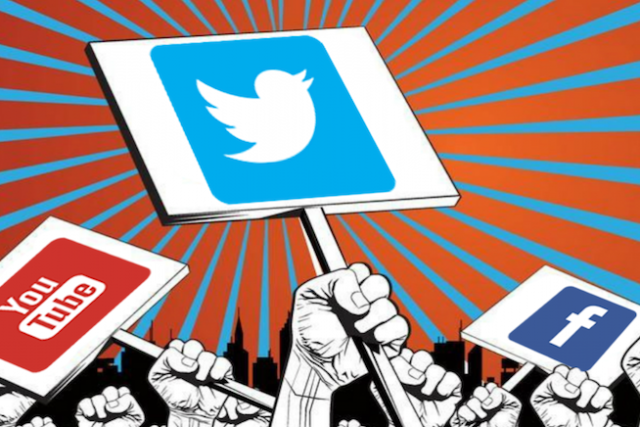In recent years, social media has transformed the landscape of political campaigns and elections. Platforms like Facebook, Twitter, Instagram, and TikTok have become powerful tools for candidates to communicate with voters, share their messages, and mobilize support. As these platforms continue to evolve, their influence on election outcomes has grown significantly. In this blog, we’ll explore the various ways social media impacts elections, from shaping public perception to influencing voter behavior.

Table of Contents
Toggle1. Amplifying Candidate Voices
One of the most significant impacts of social media on elections is the ability for candidates to reach a broad audience directly:
- Direct Communication: Candidates can bypass traditional media outlets and communicate directly with voters, sharing their thoughts, policies, and personal stories.
- Instant Updates: Social media allows candidates to share real-time updates, responses to current events, and engage in discussions, keeping their followers informed and involved.
2. Shaping Public Perception
Social media plays a crucial role in shaping how candidates are perceived by the public:
- Narrative Control: Candidates can control the narrative by presenting their message in a way that highlights their strengths and downplays weaknesses. This proactive approach allows them to shape public opinion before traditional media can react.
- Viral Content: Posts that resonate with audiences can go viral, amplifying a candidate’s message and influencing public perception on a massive scale. Memes, videos, and infographics can effectively convey complex ideas in an easily digestible format.
3. Engaging Younger Voters
Social media is particularly effective at engaging younger demographics, who may be less likely to engage with traditional forms of media:
- Targeted Messaging: Campaigns can tailor their messages to resonate with younger voters, focusing on issues that matter to them, such as climate change, social justice, and student debt.
- Peer Influence: Social media facilitates peer-to-peer communication, allowing friends and influencers to encourage their networks to participate in the electoral process, which can lead to increased voter turnout among younger audiences.
4. Mobilizing Supporters
Social media serves as a powerful tool for mobilizing supporters and encouraging civic engagement:
- Event Promotion: Candidates can use social media to promote events, rallies, and volunteer opportunities, making it easy for supporters to get involved.
- Call-to-Action Posts: Posts that encourage followers to register to vote, contact their representatives, or participate in local events can effectively mobilize grassroots support.
5. Influencing Voter Behavior
The way information is presented and consumed on social media can significantly impact voter behavior:
- Information Overload: The sheer volume of content on social media can lead to information overload, making it challenging for voters to discern credible information from misinformation. This can affect their perceptions of candidates and issues.
- Echo Chambers: Social media algorithms often create echo chambers, where users are primarily exposed to content that aligns with their existing beliefs. This can reinforce biases and polarize opinions, influencing voter behavior and decision-making.
6. Misinformation and Disinformation
While social media can be a powerful tool for positive engagement, it also poses risks through the spread of misinformation and disinformation:
- Viral False Information: False narratives, rumors, and misleading information can spread rapidly on social media, potentially swaying public opinion and impacting election outcomes.
- Manipulative Tactics: Some campaigns may resort to unethical tactics, such as creating fake accounts or using bots to amplify certain messages, undermining the integrity of the electoral process.
7. Real-Time Feedback and Adaptation
Social media provides candidates with immediate feedback on their messaging and strategies:
- Polling and Sentiment Analysis: Candidates can gauge voter sentiment through social media interactions, allowing them to adjust their messaging and campaign strategies in real time.
- A/B Testing: Campaigns can test different messages, images, and calls to action to see what resonates best with their audience, optimizing their strategies for greater impact.
8. Impact on Political Advertising
Social media has changed the landscape of political advertising, offering new opportunities and challenges:
- Targeted Advertising: Campaigns can use data analytics to target specific demographics with tailored ads, ensuring their message reaches the right audience.
- Cost-Effective Campaigning: Social media advertising can be more cost-effective than traditional advertising methods, allowing campaigns with limited budgets to reach a broader audience.
9. Post-Election Engagement and Accountability
The impact of social media extends beyond election day:
- Continued Engagement: Candidates can maintain communication with their supporters post-election, fostering community and encouraging civic engagement.
- Accountability: Social media can serve as a platform for voters to hold elected officials accountable, as public officials are often scrutinized based on their online actions and statements.
Conclusion
The impact of social media on election outcomes is profound and multifaceted. From amplifying candidate voices to influencing voter behavior and mobilizing supporters, social media has transformed the way elections are conducted and how candidates engage with the electorate. As social media continues to evolve, its role in shaping public perception, disseminating information, and facilitating civic engagement will only grow. Understanding and harnessing this power is essential for political campaigns seeking to navigate the complex landscape of modern elections.


No responses yet